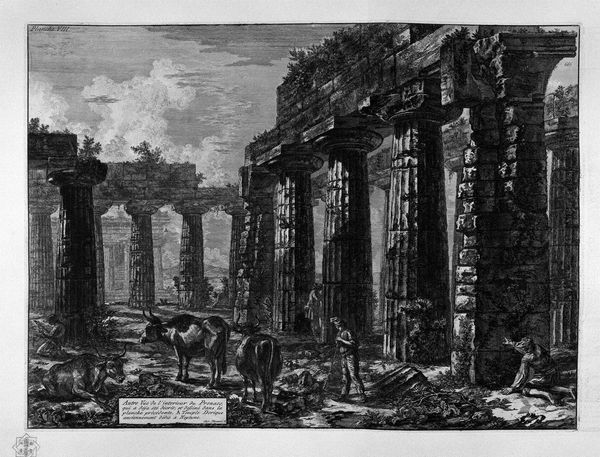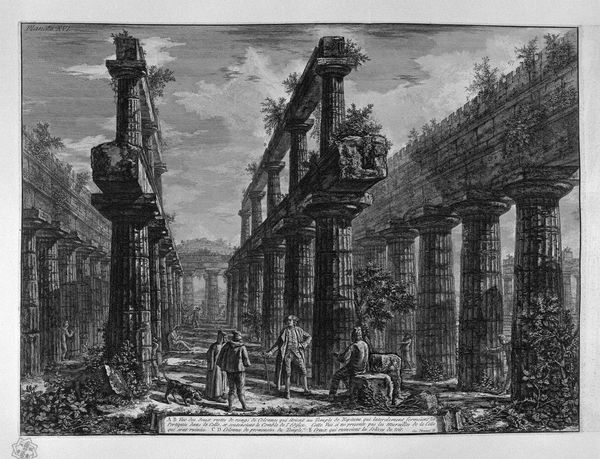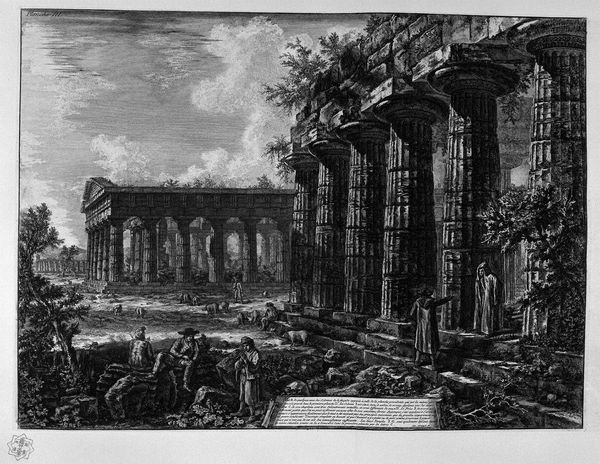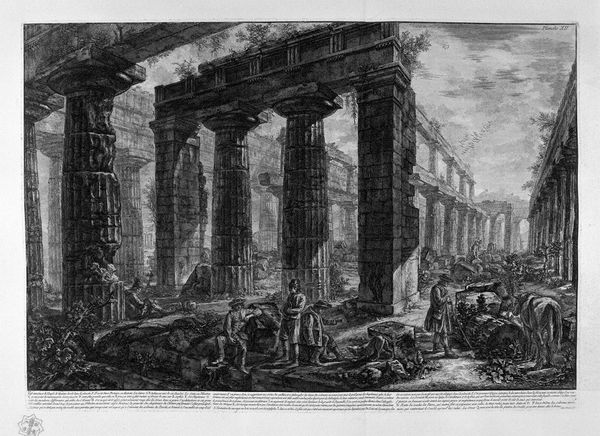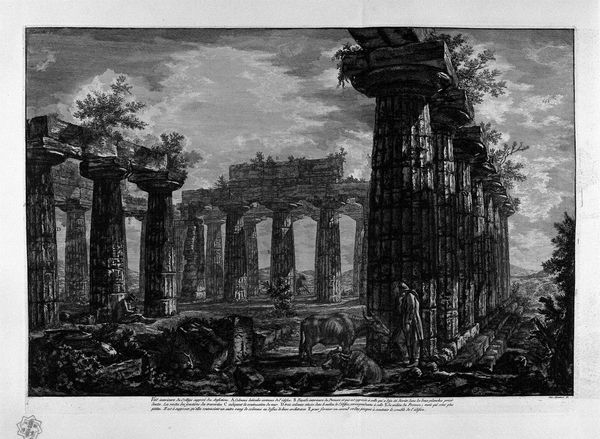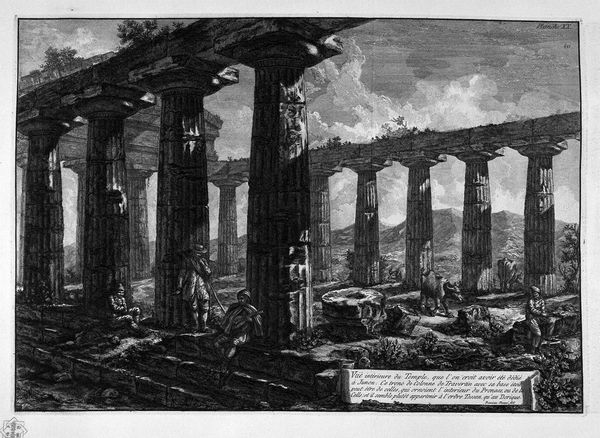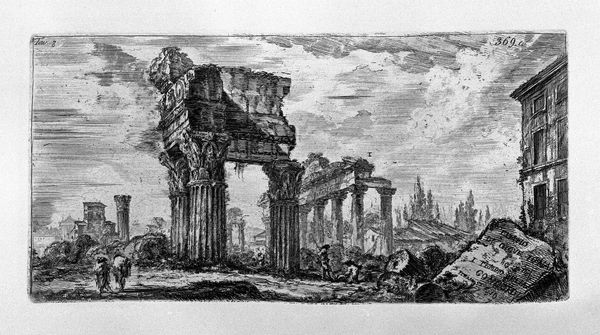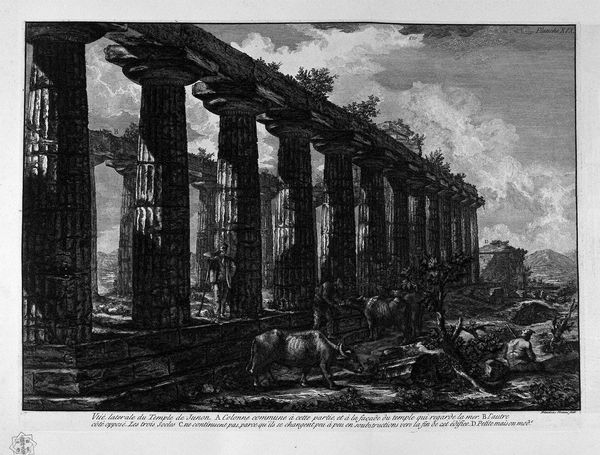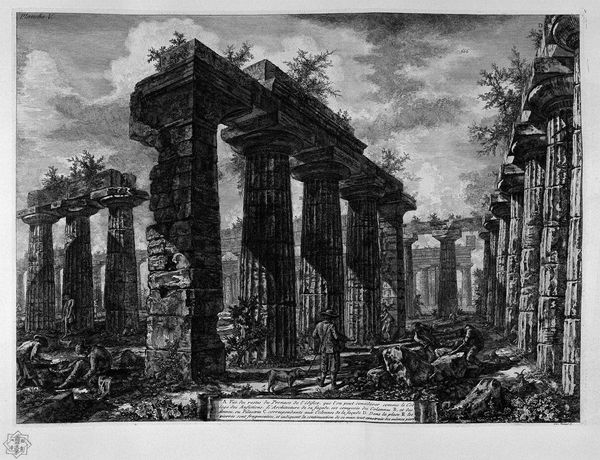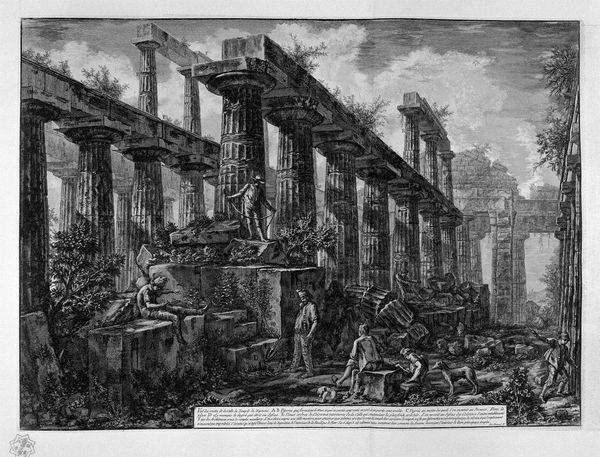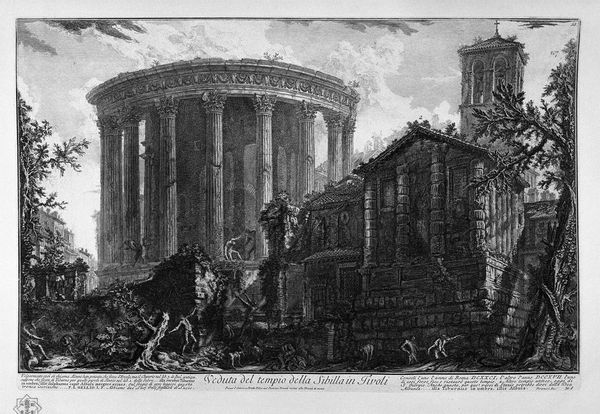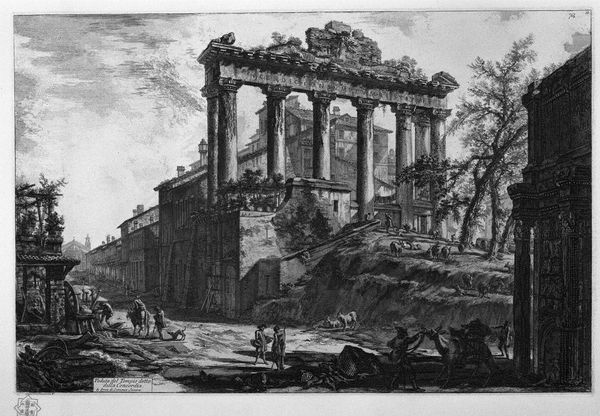
Interior of pronaos of the Temple itself, which looks toward the ground
0:00
0:00
print, etching, engraving, architecture
# print
#
etching
#
landscape
#
classical-realism
#
perspective
#
ancient-mediterranean
#
line
#
history-painting
#
engraving
#
architecture
Copyright: Public domain
Editor: This engraving by Giovanni Battista Piranesi depicts the "Interior of pronaos of the Temple itself, which looks toward the ground." I find the scene rather melancholy, and also impressive with all these architectural remains depicted. What can you tell me about it? Curator: For me, Piranesi’s meticulous attention to detail is less about the temple’s former glory and more about documenting the sheer labour involved in its construction, and then the slow, inevitable decay. Consider the human figures dwarfed by these massive stones, evidence of human endeavor and a comment on how empires and societal structures rise and crumble. How does this etching become a commodity itself, both in its making, using metal plates and acid, and in its later consumption by viewers? Editor: So, you're focusing on the work and the processes involved. The creation of both the Temple ruins and then of the image itself? Curator: Exactly! Look at the layering of the lines, almost like different applications of material to construct the image – much like the layered blocks used to create the temple. Even the ruinous state suggests an active process, a degradation happening over time, made possible only through the exploitation of resources. What kind of value do we assign this ruin today? Is it the same as when the Temple was first built? Editor: It's fascinating to think about art as a document of human work, rather than just some detached aesthetic object. It almost reframes my perspective on other architectural depictions as well. Curator: It shows how examining the materials, production, and distribution challenges traditional art boundaries. Seeing the labour and the commodification behind the art changes your perception, doesn't it? Editor: Yes, I hadn't considered that these details communicate so much about labor, materiality, and consumption, but I definitely see it now. Thanks.
Comments
No comments
Be the first to comment and join the conversation on the ultimate creative platform.
